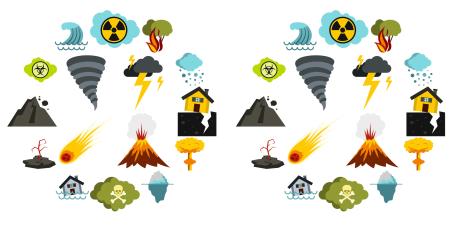Wars and epidemics have often stimulated massive health system reforms.
14th Century
The plagues that ravaged Europe led to the creation of the first public health committees.
18th Century
The devastation of the French Revolution prompted France to establish the first true national health care system; many other European nations would later follow suit.
19th Century
Preventable deaths in the British military during the Crimean War stimulated significant reforms to hospital conditions and the nursing profession.
20th Century
World War II—the prospect of invasion led doctors and politicians in England to initiate state involvement in the health care system; in 1943, a proposal for national health insurance was brought before the US Congress, albeit unsuccessfully; postwar reconstruction witnessed the emergence of a movement towards a federally funded social health care program in Canada.
21st Century
An outbreak of severe acute respiratory syndrome (SARS), a novel, potentially deadly viral infection, prompted substantial changes to the public health systems in China and Canada.
The temporal correlation between the occurrence of wars or epidemics and attempts at health care reform exists in large part because the health of the public gains importance when its absence threatens a nation's integrity and security.
The US learned this valuable lesson during the Revolutionary War, when American colonial forces were weakened early on as nonimmunized soldiers fell victim to smallpox, while British soldiers, who had encountered the disease in England and had thus acquired immunity, were relatively unaffected. Recognizing that protecting national interests in times of war necessitates a healthy fighting force, the US government instituted health care coverage for members of the US Armed Forces and Merchant Marine.1
But with the US presently engaged in a "war on terror," in which not only soldiers but also civilians are targets, a healthy fighting force is no longer enough to ensure national security; the time has come for this country to take up reforms that promote the health of all Americans.
Reassuringly, this is not a novel proposal. Reflecting upon statements made in 1944 by American medical historian Henry E. Sigerist, MD, concerning the power of external security threats to stimulate reform, a recent editorial in the American Journal of Public Health suggested that, "[t]his incendiary moment may be just the time for rekindling reform."2 Similarly, emergency physician and medical ethicist C. Griffin Trotter, MD, PhD, recently declared: "National security, I submit, is the new banner for health care reform."3
Consider the threat of bioterrorism: the potential use of biological weapons against this country raises the specter of a unique kind of war in which battles will be fought not against soldiers and artillery but against epidemics. Without significant reform to ensure access to health care for all Americans, the US will be unable to fight such battles effectively.
Why Access?
Using infectious diseases as weapons, bioterrorism threatens to weaken the civilian workforce and, hence, a nation's ability to go about its daily business. Moreover, in the case of diseases that are transmissible person to person, each infected individual becomes a human weapon, infecting others, who then infect others, and so on, tying up medical responders and overwhelming medical resources.
A nation's greatest defense against bioterrorism, both in preparation for and in response to an attack, is a population in which an introduced biological agent cannot get a foothold, ie, healthy people with easy access to health care.
Yet, in spite of spending significantly more per capita on health care than any other developed nation, the US is peppered with communities in which many people have little or no access to health care. This may be due to a lack of adequate health insurance—a fact of life for over 43 million demographically diverse Americans—or to cultural barriers that inhibit proper utilization of available services, or to inadequate distribution of health professionals and services. These communities are more vulnerable to infectious diseases4 and therefore might be considered the nation's Achilles' heal in a bioterrorism attack.
Take, for example, vaccination. A lack of access to health care among US citizens, particularly immigrant populations and those living in poverty, is associated with a failure to be vaccinated. This can have a serious impact on the spread of contagion, as evidenced by a rubella outbreak in 1997 in Westchester County, New York, in which a readily containable virus managed to infect a community composed largely of immigrants who had not been immunized.5
Granted, US federal law permits all persons, including immigrants living here illegally, to receive emergency health care, immunizations and treatment of communicable diseases; those who are unable to pay can receive these services through Medicaid. Studies have shown, however, that immigrants are often disinclined to apply for Medicaid for fear that doing so will compromise their residency status or citizenship applications.6 Still others avoid the health care system altogether due to mistrust or language barriers.7
Yet, the stockpiling of "prophylactic countermeasures" remains the focus of many current preparedness initiatives, including Project BioShield.8 The national stockpile of smallpox vaccine, for example, has been expanded in the wake of the 2001 terrorist attacks to a point where it now contains sufficient quantities to vaccinate the entire US population, in the event that the threat of smallpox is deemed imminent.9
If effectively disseminated—through mass vaccination programs, for example—the vaccines would indeed constitute a significant line of defense against smallpox; however, it would be a line unwittingly breached by persons unable to be vaccinated. Since this is true of any and all such stockpiles, barriers to access must be addressed if these initiatives are to effectively mitigate the harmful effects of any bioterrorist attack.
Immunization, however, is not the whole story; though comprehensive vaccination programs may help to defend against select agents like smallpox, it is simply impractical to suggest that all Americans could, in anticipation of such an attack, be given vaccines and subsequent boosters, if necessary, for each and every pathogen that could be used as a weapon—especially since a bioweapon would quite possibly contain an engineered strain of a pathogen for which no satisfactory vaccine exists.
If such an attack were to take place, it would be imperative for infected individuals to seek immediate medical attention. This is especially true for index cases, the identification and isolation of which is essential to limit the spread of contagion (if the agent used is transmissible person to person). Early identification of index cases enables health officials to trace contacts and swiftly report potential cases, thereby allowing early measures—such as isolation or quarantine—to halt, or at least slow, an emerging potential epidemic.10
A lack of access would greatly impede such an early and effective response, turning vulnerable citizens into unwitting facilitators for the spread of infectious disease. Indeed, it has been shown that people without health insurance report up to 47 percent fewer visits to physicians,11 and often wait longer to seek medical attention even when doing so would be prudent, eventually presenting in advanced stages of infection.
Almost certainly, once an incident of bioterrorism has been identified and news of it has permeated the media, all potentially exposed persons, insured and uninsured alike, would report to health care facilities for assessment. But by then it might be too late to prevent the outbreak from devastating entire communities—especially since recent data suggest that to prevent new viral epidemics, infected patients must be identified and isolated at the earliest possible stages of an outbreak to avoid the virus reaching peak infectivity.12
What Can Be Done?
In their recent report, "Insuring America's Health," the Institute of Medicine recommended that Congress and the White House immediately begin working towards universal health insurance coverage for all Americans by 2010, acknowledging that "the persistence of sizable uninsured populations in many communities in the United States… [redirects] funds to the uninsured away from core public health programs that address control of communicable diseases and emergency preparedness."13
But if preparedness is sought in the present, swift and concerted efforts to ensure access to care for all must begin immediately. Doing so, however, will require the dedication of funds that are already in short supply.
To complicate matters, it has been argued, (as in the Virtual Mentor article by Victor Sidel, MD, and Barry Levy, MD, MPH in this issue), that preparedness initiatives themselves may inappropriately divert financial resources from other essential public health programs, and thus perpetuate inequalities in health care.14,15
Conversely, while acknowledging the importance of a strong public health system, both for preparedness and in general, others have suggested that "positive synergies can be created between terrorism preparedness and improved responsiveness to everyday health threats," by putting "homeland health security dollars to work to do 'double duty': that is, to help revitalize the entire public health system."16
Perhaps this notion of "double duty" funding should also be applied to the problem of access to health care. Since access to care is a prerequisite to bona fide preparedness, programs aimed at providing truly universal access to care—and not the semblance thereof represented by emergency departments3—should, to some extent, be considered preparedness initiatives. Hence, some of the billions of dollars being poured into preparedness could justifiably be applied to the immediate creation and enactment of such programs.
Is its contribution to bioterrorism preparedness the only reasonable appeal that can be made in favor of universal access to health care? Of course not—far from it—but it is one that is likely to fall on receptive ears in the present political climate. The time is ripe for voicing support for universal access to health care as a necessary goal, both in its own right and as a key element of national defense.
References
-
Geraghty KE, Wynia M. Advocacy and community: the social roles of physicians in the last 1000 years. Part III. MedGenMed. 2000:E27.
-
Birn A, Fein O. Editorial: why "rekindling reform?" Am J Pub Health. 2003;93:16-17.
-
Trotter CG. Emergency medicine, terrorism, and universal access to health care: a potent mixture for erstwhile knights-errant. In: Moreno JD, ed. In the Wake of Terror: Medicine and Morality in a Time of Crisis. Cambridge, Mass: MIT Press; 2003:133-146.
- Zuber PL, Dignam TA, Caldwell MB, Weisner PJ. The burdens of uninsured hospitalizations in an urban county. Eff Clin Prac. 2000;3(3):131-137.
-
Rubella outbreak—Westchester County, New York, 1997-1998. MMWR. July 9, 1999;48:560-63. Available at: http://www.cdc.gov/mmwr/PDF/wk/mm4826.pdf. Accessed March 3, 2004.
-
Schlosberg C, Wiley W. The impact of INS public charge determinations on immigrant access to health care. National Health Law Program. May 12, 1998. Accessed March 2, 2004.
-
Landers SJ. Immigrants swell ranks of uninsured. American Medical News. August 21, 2000. Accessed March 3, 2004.
-
Project BioShield Act of 2003. Accessed March 2, 2004.
-
Centers for Disease Control and Prevention. Protecting Americans: smallpox vaccination program. Accessed April 22, 2004.
-
Halstead T, Lind M. Lack of health care for all creates US security risk. USAToday. November 12, 2001:A17.
-
Council on Ethical and Judicial Affairs, American Medical Association. Caring for the poor. JAMA. 1993;269:2533-2537.
-
Chinese SARS Molecular Epidemiology Consortium. Molecular evolution of the SARS coronavirus during the course of the SARS epidemic in China. Science. 2004;303:1666-9. [Epub January 29, 2004.]
-
The Institute of Medicine of the National Academies. Insuring America's Health. Washington, DC: National Academies Press; 2004. Accessed March 2, 2004.
-
Sidel V, Levy B. Terrorism "preparedness": diversion of resources and erosion of trust. Virtual Mentor. May 2004. Accessed May 3, 2004.
-
Eckenwiler LA. Emergency health professionals and the ethics of crisis. In: Moreno JD, ed. In the Wake of Terror: Medicine and Morality in a Time of Crisis. Cambridge, Mass: MIT Press; 2003:111-131.
-
Hearne SA, Segal AM. Leveraging the nation's anti-bioterrorism investments: foundation effort to ensure a revitalized public health system. Health Affairs. 2003;22:230.



